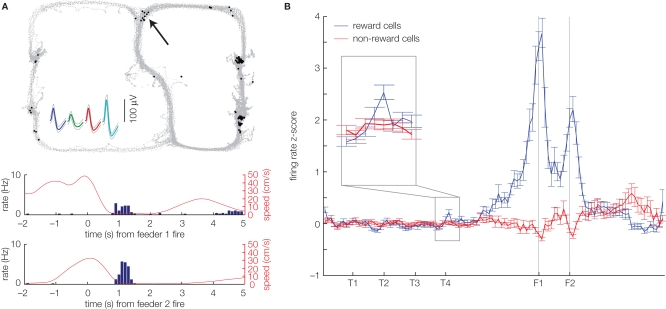Figure 2.
Ventral striatal neurons show covert expectation of reward at a maze choice point. (A) Example of a reward-responsive neuron in ventral striatum that also fires spikes at other points on the maze, notably at the choice point (black arrow). The top panel shows the rat's path on the track (gray dots), with the black dots indicating the location of the rat when a spike was fired. This neuron responded to reward delivery at the two feeder sites on the right side of the track, as indicated by the transient increase in firing rate at the time of reward delivery (peri-event time histograms, bottom panels). Data taken from a variation on the Multiple-T task published by van der Meer and Redish (2009a). (B) Averaged over all cells, reward-responsive (blue), but not non-reward-responsive neurons (red) show a slight but significant increase in firing at the final choice point (T4) during early laps (1–10). Replot of the data in Figure 5, van der Meer and Redish (2009a), obtained by normalizing each cell's firing rate against the distribution of firing rates over the sequence of turns (from S to past T4) in laps 1–10; the original figure published by van der Meer and Redish (2009a) normalized against the firing rate distribution over the same segment of the track, but from all laps. The covert representation of reward effect at T4 was robust against this choice of normalization method.

